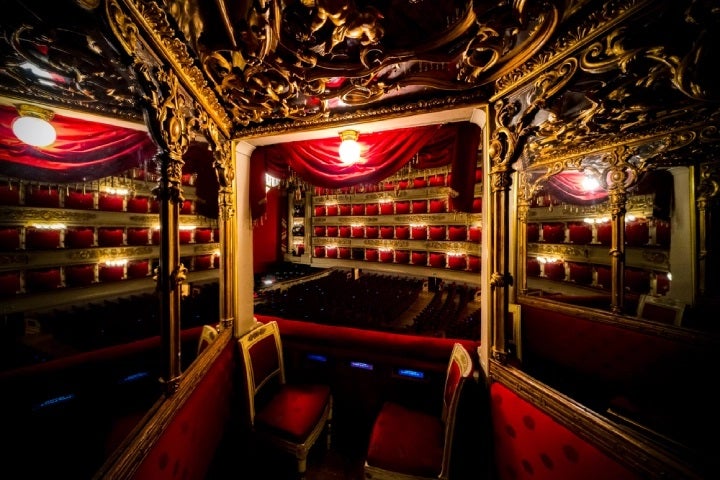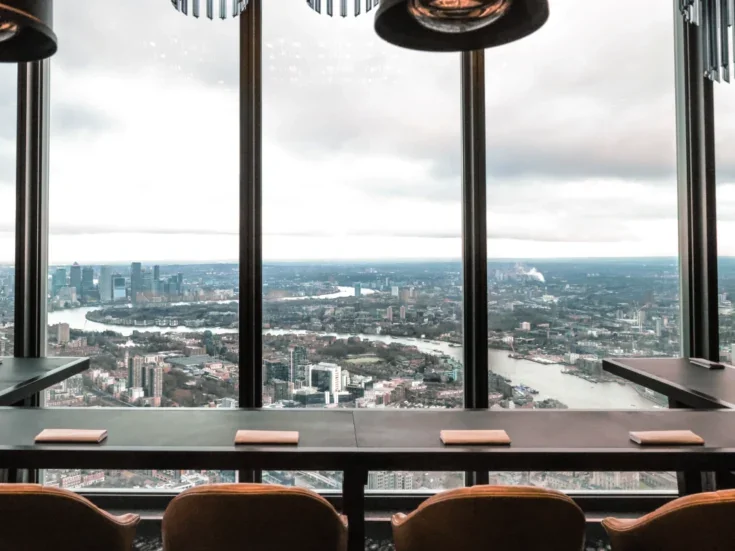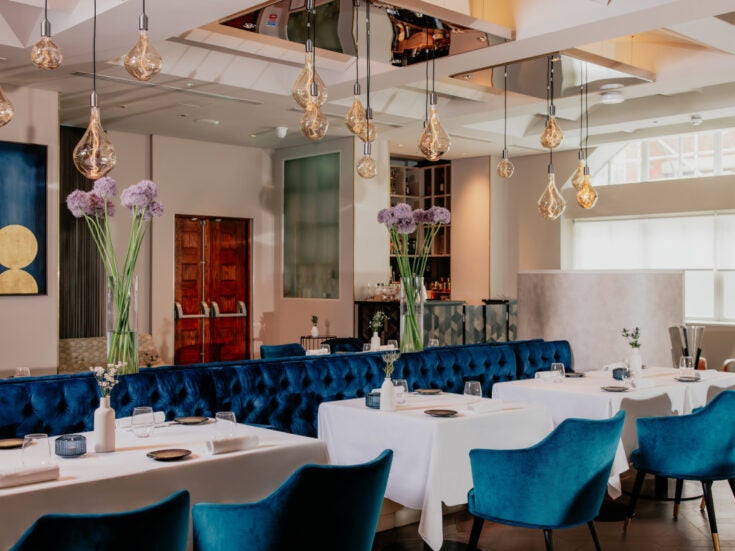
Going to the theatre has been, for centuries, the elite activity among all.
From Germany’s Margravial Opera House to Milan’s Teatro Alla Scala, there are many impressive and beautiful opera houses all around the world.
Spear’s has chosen ten of the most architecturally sophisticated ones, which carry beauty, grace and magnificent acoustics. A lot of culture can be experienced in a single night at a theatre, so here are the most beautiful ones.
Margravial Opera House, Bayreuth, Germany

Built between 1745 and 1750 through a commission by Margravine Wilhelmine, the wife of Frederick, the Margrave of Brandenburg-Bayreuth, the Margravial Opera House proudly exhibits its exquisite Italian Late Baroque architecture. Designed by architect Giuseppe Galli Bibiena, the sandstone façade however was court architect Joseph Saint Pierre’s baby.
The outwardly austere architecture suddenly transforms into a colourful and glamorous festival of murals, paintings and friezes, showing off the opulence and class to visitors fortunate enough to enter and get a glimpse of its grandeur. With its main design sporting gold, blue and red, the opulent theatre is the only one of its kind to be entirely preserved. Wood and canvas, the original building materials of the auditorium, have been retained for an authentic acoustics experience.
The Greek god Apollo looks down from a painting on the ceiling at the rich auditorium, which is bedecked with gilded boxes and garlanded pillars. Leading the world’s list of most opera houses with 59, Germany can also boast about Margravial Opera House’s UNESCO-declared world heritage site status.
Palais Garnier, Place de l’Opéra, Paris, France

Construction for this combo of Beaux-Arts and Neo-Baroque style opera house began in 1861 with the inauguration taking place in 1875. French architect Charles Garnier, who designed the structure, reportedly described it to Empress Eugenie as being “Napoleon III” style.
The French luxuriantly decorated structure with Greek gods sculpted into its marble friezes made history of sorts when Gaston Leroux used it as a setting for his novel The Phantom of the Opera, which was ultimately made into the now world-famous musical. The centre of the theatre houses a humongous seven-ton crystal chandelier and beautiful frescoes on the ceiling (added by Marc Chagall in 1962).
The opera’s ornately decorated main façade with its jade-coloured dome sporting a statue of Apollo is a magnificent sight, even in this architecturally endowed city of romance. The interior settings mirror the artistic elegance and predilection that was prevalent during France’s Second Empire.
Estates Theatre (or Stavovské divadlo) Prague, Czech Republic

One of Europe’s oldest, finest and continuously operating opera houses, the Estates Theatre Prague was established by Prague-born aristocrat Count František Antonín Nostitz Rieneck in 1783. With an auditorium exuding sophistication in a classy combo of blue, gold and white, the stunning opera house provides an almost similar experience to the La Scala.
The world premiere of Mozart’s Don Giovanni was conducted by the brilliant composer himself in this elegant, luxuriant and historic venue. Other composers to perform include Puccini and Verdi. Czech director Miloš Forman shot the opera scenes from Amadeus (his Oscar-winning film) here to keep the movie as authentic as possible.
Hungarian State Opera (Magyar Állami Operaház), Budapest, Hungary

One of the stateliest opera houses on this planet, the Hungarian State Opera in Budapest was designed by Europe’s leading architect Miklós Ybl. With construction beginning in 1875, the neo-Renaissance and Baroque-style theatre was inaugurated in 1884.
The plush building, with its horse-shoe-shaped auditorium, has its royal box ensconced in the middle of the three-tiered circle. Sculptures embodying the four major operatic voices—alto, tenor, soprano and bass—decorate the main hall, which also sports a 3050 kg bronze chandelier that shines directly upon the Károly Lotz-created fresco of Greek gods on Olympus.
While murals portraying the nine Muses, adorn the vaulted ceiling, a revolving stage (complete with an advanced set of hydraulic machinery) is the main feature of the central stage proscenium. Outstanding Hungarian composers Ferenc Erkel and Franz Liszt have been immortalised as sculptures at the theatre‘s entrance.
Teatro alla Scala “La Scala”, Milan

Home to many of Italy’s operatic elite, the Teatro alla Scala is considered to be one of the top opera houses in the world and the best in Italy. Begun in 1776, La Scala was built on the location of a 14th-century gothic-style church, Santa Maria alla Scala—demolished to accommodate the opera house. A meeting place for the noble and wealthy Milan in those days, the neoclassical opera house, designed by Giuseppe Piermarini, debuted with Antonio Salieri’s L’Europa Riconosciuta in 1778.
Boasting a regally enchanting red and gold auditorium, the Italian theatre’s concave channel, ingeniously designed beneath the wooden floor where the orchestra performs, is primarily responsible for the theatre’s brilliant acoustics.
Bolshoi Theatre, Moscow, Russia

The word Bolshoi means ‘big or large’ in Russian—and so is Russia’s most famous opera house, like almost everything else in Russia. The Bolshoi Theatre in Moscow sits majestically with its colossal eight-collonaded portico enticing the traditional connoisseur.
Dating back to 1776, this grand theatre survived a fire in 1805, the French invasion of 1812 and the Russian Revolution of 1917. Designed by Petersburg-based architect Andrei Mikhailov, the project was completed by architect Joseph Bové between 1821 and 1824. The theatre, as it is now known, was officially unveiled as the Bolshoi Petrovsky Theatre in 1825.
Presenting only the works of Russian composers in the beginning, other composers were allowed performances 15 years later. Adorned by Apollo riding his chariot, the Bolshoi’s neoclassical façade (also printed on the 100 ruble note) augurs the royal grandeur that awaits its patrons. Chippendale chairs with red damask upholstery adorn the top gallery and four balconies loom over the great stage.
Harbin Opera House / MAD Architects, China

With an aerial view that is reminiscent of a Jedi Knight from Star Wars, this sinuous architectural marvel in China enthrals the heart of any architecture lover. Created by Ma Yansong of MAD Architects, the award-winning, alien-like opera house was inaugurated in 2015.
The snow-white complex’s fluid design invites audiences into a foyer that is as cool and white as the gigantic snow cave it resembles. An artist’s view from the stage shows the auditorium to be similar to a sophisticated spaceship with huge judgmental pods observing the performers.
A key feature of the interiors is the wood veneer biomorphism, carried through with aplomb into the auditorium, prompting visitors to fill up their phone memories with countless selfies. Hidden away in the folds of a metal sheet is a secluded rooftop terrace, providing a monumental perspective of the Songhua River for anyone chancing to turn their heads away from the superb interiors of this modern operatic wonder.
Teatro La Fenice, Venice, Italy

La Fenice opened in 1792 to the plan of architect Giannantonio Selva. The now exquisitely designed theatre in Venice burnt down thrice—in 1774, 1836 and 1996, the reason for the third fire being arson committed by two electricians allegedly lagging on renovation and repairs. The façade, featuring a neoclassical-style colonnade, was the only thing left standing after the latter two blazes.
Aptly named La Fenice (The Phoenix), a €90-million replica of the famous opera house rose from the ashes on the strength of worldwide donations in 2003. The gilt-encrusted super-ornate royal box, not part of Selva’s plan, came about in 1807 to accommodate Emperor Napoléon Bonaparte.
Great composers such as Gaetano Donizetti, Gioachino Rossini, Giuseppe Verdi, Igor Stravinsky, Vincenzo Bellini, Sergei Prokofiev, Igor Stravinsky and Benjamin Britten have all had their compositions performed here.
Palau de les Arts Reina Sofía, Valencia, Spain

Situated on 86 acres on the dry bed of the Turia river, the tallest opera house in the world at 246 feet (75 metres) and 14 storeys, the Palau de les Arts Reina Sofía in Valencia is a modern masterpiece designed by Valencia-born architect Santiago Calatrava.
With construction beginning in 1995 (a joint venture of Dragados and Necso), it was inaugurated 10 years later and the first performance was Beethoven’s Fidelio, in 2006. Resembling the helmet of a Spanish conquistador, the towering structure appears to be built in a series of random volumes.
The building in Spain fuses inside two cut-away concrete shells, which are crowned by an axially projecting steel sheath that sweeps out from the entrance concourse to cover the topmost contours of the curvilinear visor. The brown and white auditorium resembles the frames of a keeled-over ship. Famous tenor Plácido Domingo has a young singers training programme in the Palau.
Sydney Opera House, Australia

A UNESCO World Heritage Site since 2007, the beautiful Sydney Opera House, designed by Jørn Utzon, resembles sails and shells in keeping with the history of the old tidal island called Bennelong on which it stands.
In days of yore, the small spit of land was dotted with oyster shells used by aboriginal women, an idea that Utzon perfectly put into practice with this contemporary structure, which was unveiled in 1973 with a performance of Prokofiev’s War and Peace.
One of the most noteworthy venues of the opera house is the Concert Hall, which has the world’s biggest mechanical tracker-action organ. To enhance the acoustic qualities, different types of wood have been used for panelling the insides of each theatre of the Sydney opera house, which also resemble the keys of a piano—providing an additional degree of sophistication.
More from Spear’s
Oman’s Royal Opera House is the envy of its neighbours
Opera powerhouse: David Ross on what the Nevill Holt means for the people
Score a pitch-perfect afternoon tea at the Royal Opera House






